Person who has physical body by embedding electrode in brain achieves new record of character input speed "minute speed 8 words"

A research team such as Stanford University succeeded in reading the electric signal of the brain by pasting a small electrode on the part called the motor cortex of the brain so as to operate the computer without using the arm or finger and entering the sentences . By using this technology, there is the possibility that people with paralysis due to injuries and people who can not move their bodies according to their illness can get free communication again.
New Record: Paralyzed Man Uses Brain Implant to Type Eight Words Per Minute - IEEE Spectrum
http://spectrum.ieee.org/the-human-os/biomedical/bionics/new-record-for-typing-by-brain-paralyzed-man-uses-brain-implant-to-type-8-words-per-minute
The research team at Stanford University is developing an electrode of about a small tablet drug on the surface of the part called the "motor cortex" of the brain, detecting the electric signal of the neuron that is emitted together with the function of the brain Processing is done by computer. Pins of about 1 mm in length are attached to the electrode, and it is designed to monitor the electric signals sensed for each pin.

Actually using this system, you can see how you operate the computer just by thinking in the movie below.
Stanford researchers develop brain-controlled typing for people with paralysis - YouTube
Using the equipment, muscles of the whole body can not moveAmyotrophic lateral sclerosisA woman who developed ALS. When it comes to this disease, not only use hands but also speak the language, it will be in a state not to leave the situation, but the brains are as before and the feature is that it has no influence as to say at all to memory and thinking.
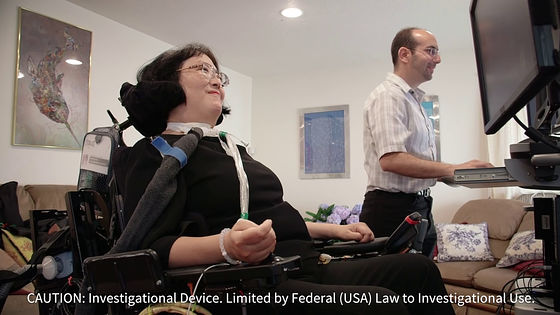
It is like moving the cursor displayed on the screen freely, selecting characters and entering words. I am doing this by thinking that "I am moving my hand" in my head.

"The goal of our research is to bring back the functions of those who have lost the ability to move their bodies because of illnesses," said Jamie Henderson, a member of the research team at Dr. Neurosurgery.

Krishna Shenoyi, a member of the research team who is also a professor in the field of electrical engineering, said, "This system allows you to select the letters by moving the cursor by listening to the electrical signals of the brain I will.

A box-shaped device connected to the cable is connected to the head of the woman participating in the study.

It looks like you are wearing this box on the electrode of the female head and making measurements.
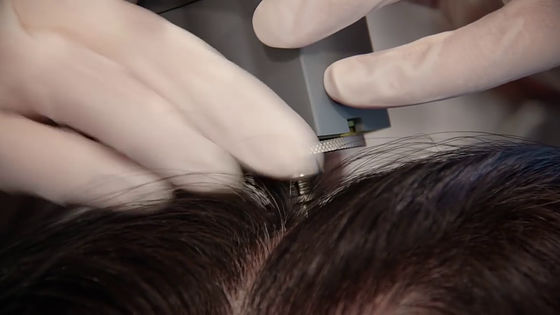
Behind the wheelchair on which the woman is riding, equipment for processing is placed.
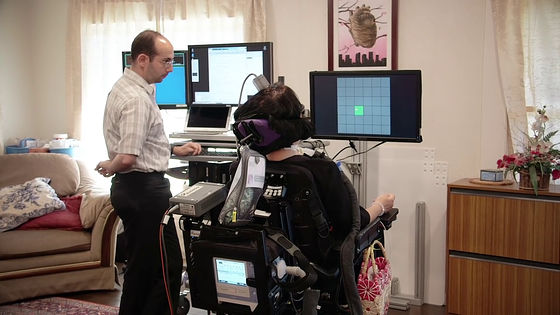
In response to the question "When you went on a trip to the Grand Canyon, what was the most enjoyable thing?" Displayed on the screen, the woman picked one alphabet one by one and answered, "I enjoyed the beauty of the scenery." In the test of inputting the text to be the subject which another participant carried out, it was able to input 8 words (8 words instead of 8 characters) per minute. This seems to have been a dramatically faster speed than the conventional way to follow the dial with the conventional eye. From now on, we will prefetch the input charactersDasher"

From the electrodes attached to the brain of the subject, 96 electrical signals are sent to the computer, omitting the four corners. Subjects first use this device to think of actions such as "raising and lowering the right hand" and "moving the forefinger" in the head. Of course, the body does not actually move, but still the neuron "ignites" in order to move the body in the brain to generate electric signals. By reading the signal with a 96ch sensor, by finding the pattern of each operation, it is made to reproduce the operation as expected on the computer.
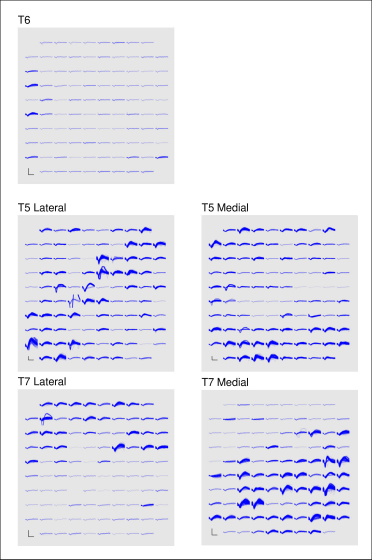
Dr. Henderson touches that this research is still the first phase of the whole and that it is research with careful consideration for safety etc. In the future, it seems that it will be aiming for adoption and downsizing of the wireless system that can be incorporated into actual life, but it seems that it is still a little earlier.
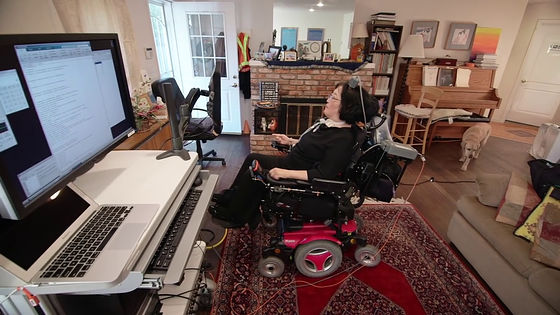
It seems that research that is likely to give hope to many patients is under way, but it seems that people who are actually subjects participate considerably positively. At one point, the woman who participated reported the reverse result to the behavior he thought, so he reported to the researcher, "Something is wrong, it does not work well." A researcher who checked the program found that a bug was present in the code of the processing program as a woman said.
Related Posts:







